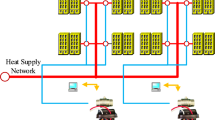Currently, there are several types of electric machines in which brush-contact devices (BCD), consisting of electric brushes and slip rings (collectors), are used to transfer electric current from the stationary part to the rotary one. These include synchronous and asynchronous motors with a phase rotor, DC and AC collector machines, as well as turbine generator. As the experience of operating these machines shows, the largest share of their failures occurs due to the BCD-related breakdowns, making up 25% of total annual breakdowns. Officially, according to the data of Russian Scientific Research Institute on Electrical Engineering, out of the 250 200 – 800 MW turbine generators operating in the Russian Federation, 20% of their failure and up to 20% of their idle time for repair involve BCD defects. The turbine generator BCD is a structural unit that requires constant supervision and adjustment during the turbine generator operation. Inadequate monitoring can lead to the rapid development of “flashover”—a severe accident, followed by a long downtime for the equipment repair. Therefore, there is a need to improve the reliability of the BCD unit operation. The following objectives have been accomplished in this paper: physical processes during the turbine generator BCD operation are considered; the main types of BCD failures are analysed; current global methods for detecting excessive vibration and defects in the turbine generator BCDs are examined; methods of predicting the development of defects by means of statistical mathematical simulation of the objects have been proposed.
Similar content being viewed by others
References
A. A. Chervonyi, V. I. Luk’yashchenko, and L. V. Kotin, Reliability of Complex Systems [in Russian], Mashinostroenie, Moscow (1976).
Yu. N. Samorodov, Defects of Generators [in Russian], ZAO ÉnergeticheskieTekhnologii, Moscow (2005).
A. A. Fominykh, Assessment of the Solid Lubrication Influence on the Tribo-Characteristics of Sliding Current Collection Nodes. Author’s Abstract of Candidate’s Thesis [in Russian], Kirov (2015).
F. Shroter, “The contact resistance of sliding contacts,” Eng. Dig., 16(10), 468 – 471 (1955).
N. A. Sokolov, “Operating experience of brush-contact devices on TVV-200-2A turbine generators,” Énergetik, No. 4 (1994).
V. V. Afanas’ev (ed.), Handbook on Calculation and Design of Contact Parts of High-Current Electric Devices [in Russian], Énergoatomizdat, Leningrad (1988).
Yu. A. Filippov and A. S. Kakurin, “Study of the effect of temperature on friction in contacts,” Élektrotekh. Prom. Appar. Vys. Napr. Transform. Sil. Kondens., Issue 3, 150 – 151 (1978).
M. A. Entin and I. K. Borokha, “Influence of ambient temperature on the wear of electric brushes,” Élektrotekh. Prom. Élektrotekh. Mater., No. 9 (1980).
RD 153-34.0-45.510-98. Standard Manual for Operation and Repair of the Assembly of Slip Rings and a Brush Device of Turbine Generators with a Capacity of 63 MW and More [in Russian], RAO EES Rossii, Moscow (2000).
Yu. N. Samorodov, “Paradoxical properties of a sliding contact in a BCD,” Bibl. Élektrotekh., No. 6 (174), 3 – 56 (2013).
A. B. Popov, “Problems of brush-contact devices of generators with electrographite brushes,” Energet. za Rubezh., No. 5, 26–37 (2021).
S. V. Nikulin, Improving the Brush Contact Properties of Electrical Machines. Author’s Abstract of Candidate’s Thesis [in Russian], Voronezh (2008).
Brush Maintenance, for the Data-Driven World: Cutsforth, https://cutsforth.com/products/easychange-monitoring
Diagnostics of Brush-Contact Device of MOSAD®-IRIS Turbine Generator: TES [in Russian], https://www.tes.eu/ru/produkt/diagnostika-sberaciho-us-troji-turbogeneratoru
I. N. Popov, “Diagnosis of brush-contact devices of turbine generators using an automated monitoring system,” Élektrooborud. Ékspl. Remont, No. 3, 31 – 39 (2019).
Author information
Authors and Affiliations
Corresponding author
Additional information
Translated from Élektricheskie Stantsii, No. 5, May 2022, pp. 32 – 42. DOI: https://doi.org/10.34831/EP.2022.1090.5.006
Rights and permissions
Springer Nature or its licensor (e.g. a society or other partner) holds exclusive rights to this article under a publishing agreement with the author(s) or other rightsholder(s); author self-archiving of the accepted manuscript version of this article is solely governed by the terms of such publishing agreement and applicable law.
About this article
Cite this article
Okhlopkov, A.V., Bitney, V.D. Analysis of Existing Methods for Detecting the State and Defects of the Brush-Contact Device of a Turbine Generator. Power Technol Eng 56, 587–596 (2022). https://doi.org/10.1007/s10749-023-01558-0
Published:
Issue Date:
DOI: https://doi.org/10.1007/s10749-023-01558-0



